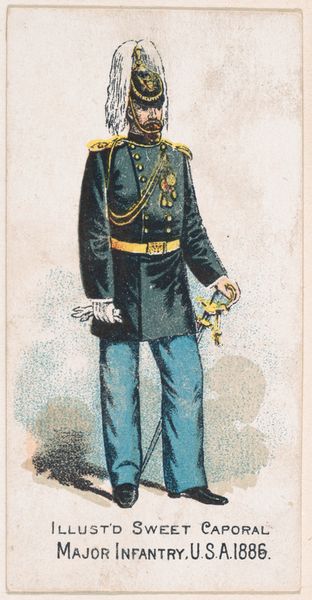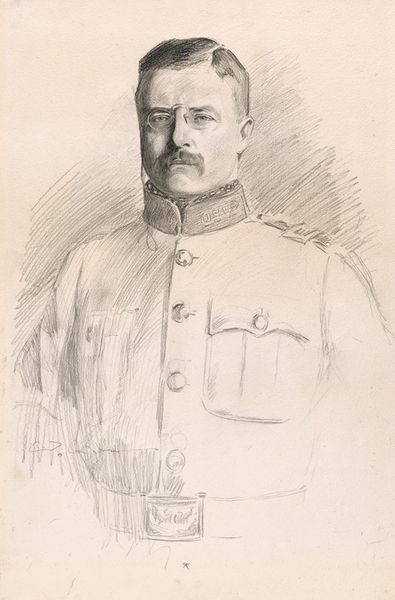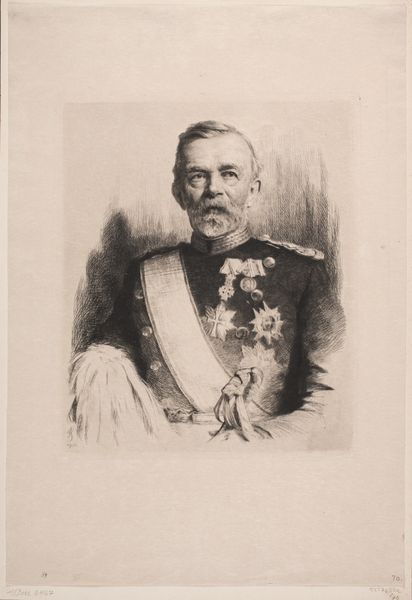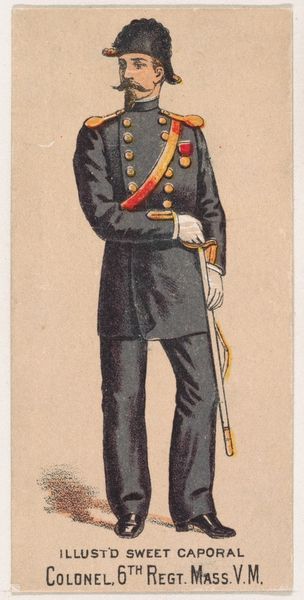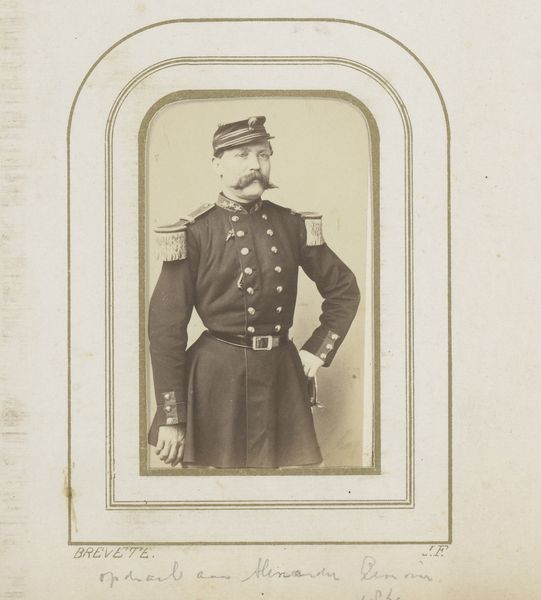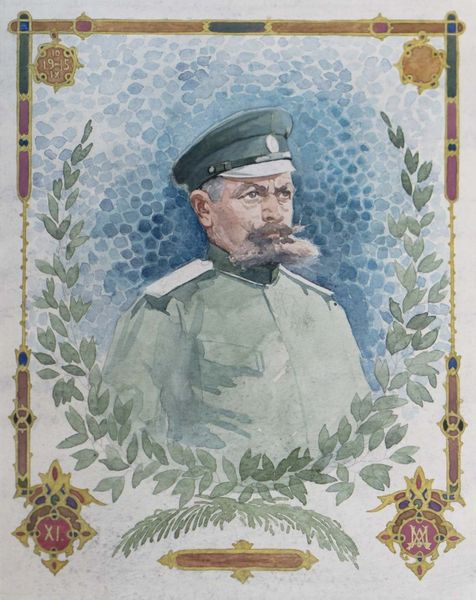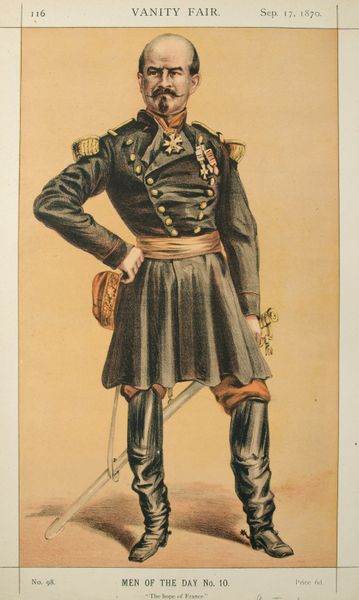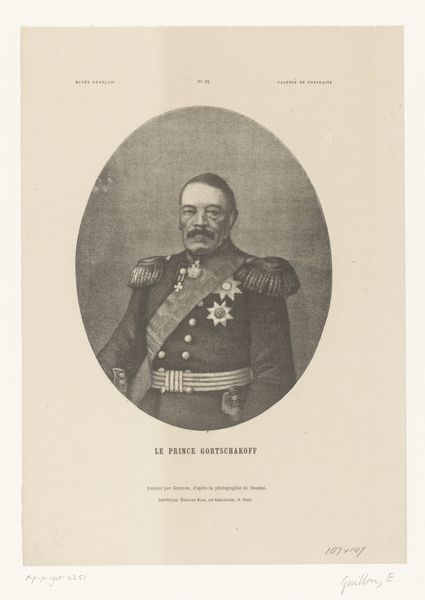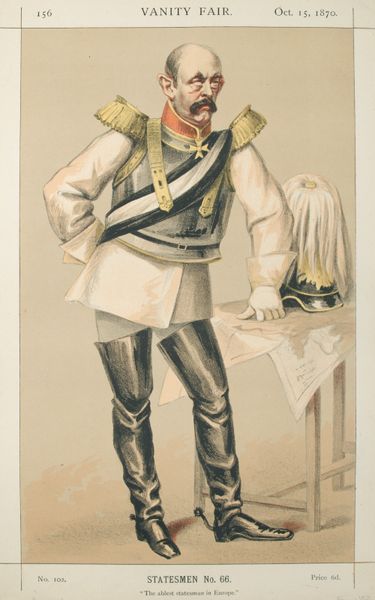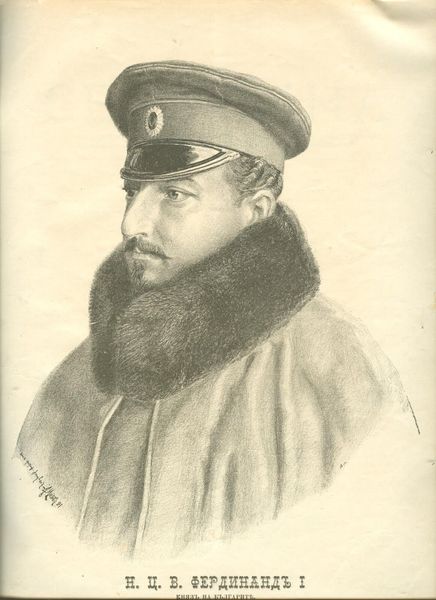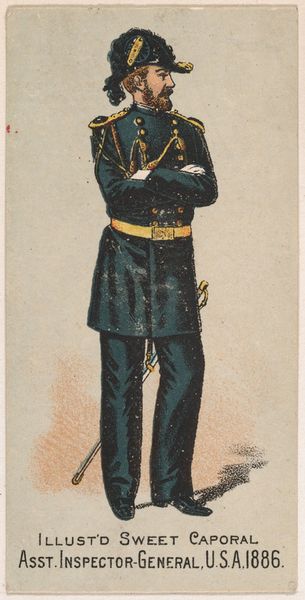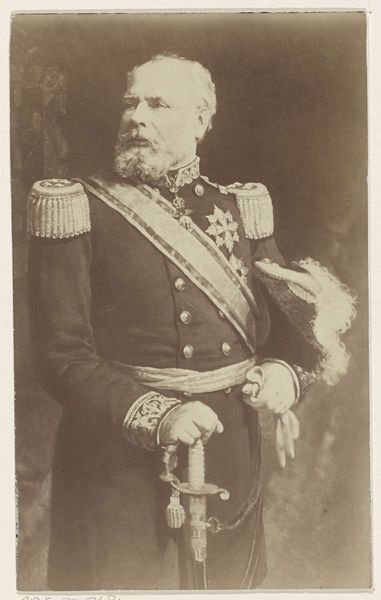
print, engraving
# print
#
figuration
#
line
#
history-painting
#
engraving
#
realism
Dimensions: 227 mm (height) x 167 mm (width) (bladmaal)
Editor: Here we have "Edouard Suenson," an engraving by Georg Pauli, created sometime between 1838 and 1928. It’s currently held at the SMK, the Statens Museum for Kunst. I’m immediately struck by the formal portrait style, yet also how the crowd in the background and visible ship suggest some momentous occasion. What can you tell us about the social context surrounding this image? Curator: Well, let's think about the rise of nationalism in 19th-century Europe and its effect on art. Consider this engraving not just as a portrait but as a visual articulation of Danish national identity. The precise detailing enabled by engraving allowed for dissemination through prints. How might this image, showing a military leader and a ship, function in building a collective memory of national pride? Editor: So it's about image politics as much as individual representation? The way the public might respond is really interesting, depending on the setting where it's shown. Curator: Exactly! Consider who would have commissioned this engraving and where it would have been displayed or circulated. What statement do you think the artist was trying to convey in a society shaped by rapid political changes and conflicts? The artist makes careful choices about lighting and perspective. Can you describe how that might contribute to the political implications? Editor: He seems lit really brightly and central in the frame compared to the very softly lit crowd. It gives him authority. Almost as though the population depends on his leadership, his strong pose and steady gaze project an image of command that probably reinforced the established hierarchy of Danish society. Curator: Precisely. The distribution of the engraving also brings up a good question: who could afford it and what impact did accessibility have in shaping a national figure such as Edouard Suenson? Editor: That makes me rethink the function of portraits from that era. I learned something new today. Curator: Me too. Thank you.
Comments
No comments
Be the first to comment and join the conversation on the ultimate creative platform.
